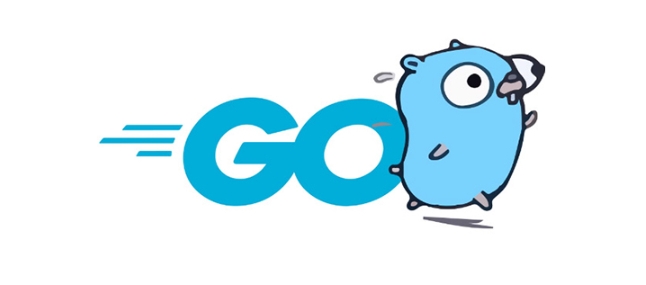The atomic package is a set of functions for performing atomic operations provided in the Go standard library sync/atomic. Its core role is to implement concurrent and safe read and write variables without using locks. It supports int32, int64, uint32, uint64, uintptr and some pointer types. Common functions include 1.AddXxx() (atomic addition), 2.LoadXxx() (atomic reading), 3.StoreXxx() (atomic setting), 4.SwapXxx() (atomic exchange), 5.CompareAndSwapXxx() (compare and exchange), and is suitable for counters, status flags, singleton initialization and other scenarios. Note when using: 1. It cannot replace the lock to handle complex structures; 2. Poor code readability; 3. CAS may perform worse under high competition; 4. Avoid abuse; 5.32-bit platform has alignment restrictions on 64-bit variables. Mastering atomic can improve concurrency efficiency, but the synchronization mechanism should be selected reasonably based on the scenario.

In Go development, atomic package is a very practical but overlooked tool. It is mainly used to implement lightweight concurrent synchronization operations, especially to complete atomic reading and writing of variables without using locks (i.e. sync.Mutex ).

What is atomic package?
Go's atomic package is located in sync/atomic in the standard library, and its main function is to provide a set of functions for performing atomic operations. The so-called "atom" means that an operation will not be interrupted once it starts. This is very important for concurrent programming, especially when multiple goroutines access shared resources at the same time.
Common scenarios include: counters, status flags, singleton initialization, etc.

What types support atomic operations?
Not all data types can be processed with atomic package. Currently, it mainly supports the following basic types:
-
int32 -
int64 -
uint32 -
uint64 -
uintptr - And some common pointers and structure pointers
For example, if you want to safely increment an integer counter without locking it, you can write this:

var counter int32
go func() {
for i := 0; i < 1000; i {
atomic.AddInt32(&counter, 1)
}
}() Note: If you try to operate on the int type, you may encounter platform difference issues, as int may be 32 or 64 bits on different systems. It is recommended to use int32 or int64 explicitly.
What are the common atomic functions?
Here are a few of the most commonly used functions, understanding them can help you better control concurrent behavior:
-
AddXxx(): used to do atomic addition to variables -
LoadXxx(): used to read variable values ??atomically -
StoreXxx(): Used to set variable values ??atomically -
SwapXxx(): swap and return the old value -
CompareAndSwapXxx(): Compare and exchange, often used for optimistic locking mechanism
For example, suppose you want to make sure that an initialization action is performed only once:
var initialized int32
func initOnce() {
if atomic.CompareAndSwapInt32(&initialized, 0, 1) {
// Execute initialization logic}
} This is lighter than using sync.Once , but it is also harder to use correctly.
What should I pay attention to when using atomic?
Although atomic is powerful, it is not omnipotent. Pay special attention to the following points:
- Can't replace locks : For complex data structures or operations on multiple fields, mutex locks should still be used.
- Poor readability : Compared to locking mechanisms, atomic operations are more prone to errors and are more difficult to understand and maintain.
- Performance may not necessarily be better : In highly competitive scenarios, CAS (Compare and Swap) may perform worse than Mutex.
- Don't abuse : Don't use atomic for the sake of showing off your skills unless you really need to avoid the overhead of locks.
In addition, some operations cannot atomically process 64-bit variables (such as int64 ) on 32-bit platforms, so be careful about alignment issues on these platforms.
Basically that's it. Mastering atomic can allow you to write more efficient concurrent programs, but don't forget that it is just a gadget for concurrency control, not a silver bullet that solves all problems.
The above is the detailed content of Go atomic package usage. For more information, please follow other related articles on the PHP Chinese website!

Hot AI Tools

Undress AI Tool
Undress images for free

Undresser.AI Undress
AI-powered app for creating realistic nude photos

AI Clothes Remover
Online AI tool for removing clothes from photos.

Clothoff.io
AI clothes remover

Video Face Swap
Swap faces in any video effortlessly with our completely free AI face swap tool!

Hot Article

Hot Tools

Notepad++7.3.1
Easy-to-use and free code editor

SublimeText3 Chinese version
Chinese version, very easy to use

Zend Studio 13.0.1
Powerful PHP integrated development environment

Dreamweaver CS6
Visual web development tools

SublimeText3 Mac version
God-level code editing software (SublimeText3)

Hot Topics
 What are the implications of Go's static linking by default?
Jun 19, 2025 am 01:08 AM
What are the implications of Go's static linking by default?
Jun 19, 2025 am 01:08 AM
Go compiles the program into a standalone binary by default, the main reason is static linking. 1. Simpler deployment: no additional installation of dependency libraries, can be run directly across Linux distributions; 2. Larger binary size: Including all dependencies causes file size to increase, but can be optimized through building flags or compression tools; 3. Higher predictability and security: avoid risks brought about by changes in external library versions and enhance stability; 4. Limited operation flexibility: cannot hot update of shared libraries, and recompile and deployment are required to fix dependency vulnerabilities. These features make Go suitable for CLI tools, microservices and other scenarios, but trade-offs are needed in environments where storage is restricted or relies on centralized management.
 How does Go ensure memory safety without manual memory management like in C?
Jun 19, 2025 am 01:11 AM
How does Go ensure memory safety without manual memory management like in C?
Jun 19, 2025 am 01:11 AM
Goensuresmemorysafetywithoutmanualmanagementthroughautomaticgarbagecollection,nopointerarithmetic,safeconcurrency,andruntimechecks.First,Go’sgarbagecollectorautomaticallyreclaimsunusedmemory,preventingleaksanddanglingpointers.Second,itdisallowspointe
 How do I create a buffered channel in Go? (e.g., make(chan int, 10))
Jun 20, 2025 am 01:07 AM
How do I create a buffered channel in Go? (e.g., make(chan int, 10))
Jun 20, 2025 am 01:07 AM
To create a buffer channel in Go, just specify the capacity parameters in the make function. The buffer channel allows the sending operation to temporarily store data when there is no receiver, as long as the specified capacity is not exceeded. For example, ch:=make(chanint,10) creates a buffer channel that can store up to 10 integer values; unlike unbuffered channels, data will not be blocked immediately when sending, but the data will be temporarily stored in the buffer until it is taken away by the receiver; when using it, please note: 1. The capacity setting should be reasonable to avoid memory waste or frequent blocking; 2. The buffer needs to prevent memory problems from being accumulated indefinitely in the buffer; 3. The signal can be passed by the chanstruct{} type to save resources; common scenarios include controlling the number of concurrency, producer-consumer models and differentiation
 How can you use Go for system programming tasks?
Jun 19, 2025 am 01:10 AM
How can you use Go for system programming tasks?
Jun 19, 2025 am 01:10 AM
Go is ideal for system programming because it combines the performance of compiled languages ??such as C with the ease of use and security of modern languages. 1. In terms of file and directory operations, Go's os package supports creation, deletion, renaming and checking whether files and directories exist. Use os.ReadFile to read the entire file in one line of code, which is suitable for writing backup scripts or log processing tools; 2. In terms of process management, the exec.Command function of the os/exec package can execute external commands, capture output, set environment variables, redirect input and output flows, and control process life cycles, which are suitable for automation tools and deployment scripts; 3. In terms of network and concurrency, the net package supports TCP/UDP programming, DNS query and original sets.
 How do I call a method on a struct instance in Go?
Jun 24, 2025 pm 03:17 PM
How do I call a method on a struct instance in Go?
Jun 24, 2025 pm 03:17 PM
In Go language, calling a structure method requires first defining the structure and the method that binds the receiver, and accessing it using a point number. After defining the structure Rectangle, the method can be declared through the value receiver or the pointer receiver; 1. Use the value receiver such as func(rRectangle)Area()int and directly call it through rect.Area(); 2. If you need to modify the structure, use the pointer receiver such as func(r*Rectangle)SetWidth(...), and Go will automatically handle the conversion of pointers and values; 3. When embedding the structure, the method of embedded structure will be improved, and it can be called directly through the outer structure; 4. Go does not need to force use getter/setter,
 What are interfaces in Go, and how do I define them?
Jun 22, 2025 pm 03:41 PM
What are interfaces in Go, and how do I define them?
Jun 22, 2025 pm 03:41 PM
In Go, an interface is a type that defines behavior without specifying implementation. An interface consists of method signatures, and any type that implements these methods automatically satisfy the interface. For example, if you define a Speaker interface that contains the Speak() method, all types that implement the method can be considered Speaker. Interfaces are suitable for writing common functions, abstract implementation details, and using mock objects in testing. Defining an interface uses the interface keyword and lists method signatures, without explicitly declaring the type to implement the interface. Common use cases include logs, formatting, abstractions of different databases or services, and notification systems. For example, both Dog and Robot types can implement Speak methods and pass them to the same Anno
 How do I use string functions from the strings package in Go? (e.g., len(), strings.Contains(), strings.Index(), strings.ReplaceAll())
Jun 20, 2025 am 01:06 AM
How do I use string functions from the strings package in Go? (e.g., len(), strings.Contains(), strings.Index(), strings.ReplaceAll())
Jun 20, 2025 am 01:06 AM
In Go language, string operations are mainly implemented through strings package and built-in functions. 1.strings.Contains() is used to determine whether a string contains a substring and returns a Boolean value; 2.strings.Index() can find the location where the substring appears for the first time, and if it does not exist, it returns -1; 3.strings.ReplaceAll() can replace all matching substrings, and can also control the number of replacements through strings.Replace(); 4.len() function is used to obtain the length of the bytes of the string, but when processing Unicode, you need to pay attention to the difference between characters and bytes. These functions are often used in scenarios such as data filtering, text parsing, and string processing.
 How do I use the io package to work with input and output streams in Go?
Jun 20, 2025 am 11:25 AM
How do I use the io package to work with input and output streams in Go?
Jun 20, 2025 am 11:25 AM
TheGoiopackageprovidesinterfaceslikeReaderandWritertohandleI/Ooperationsuniformlyacrosssources.1.io.Reader'sReadmethodenablesreadingfromvarioussourcessuchasfilesorHTTPresponses.2.io.Writer'sWritemethodfacilitateswritingtodestinationslikestandardoutpu






